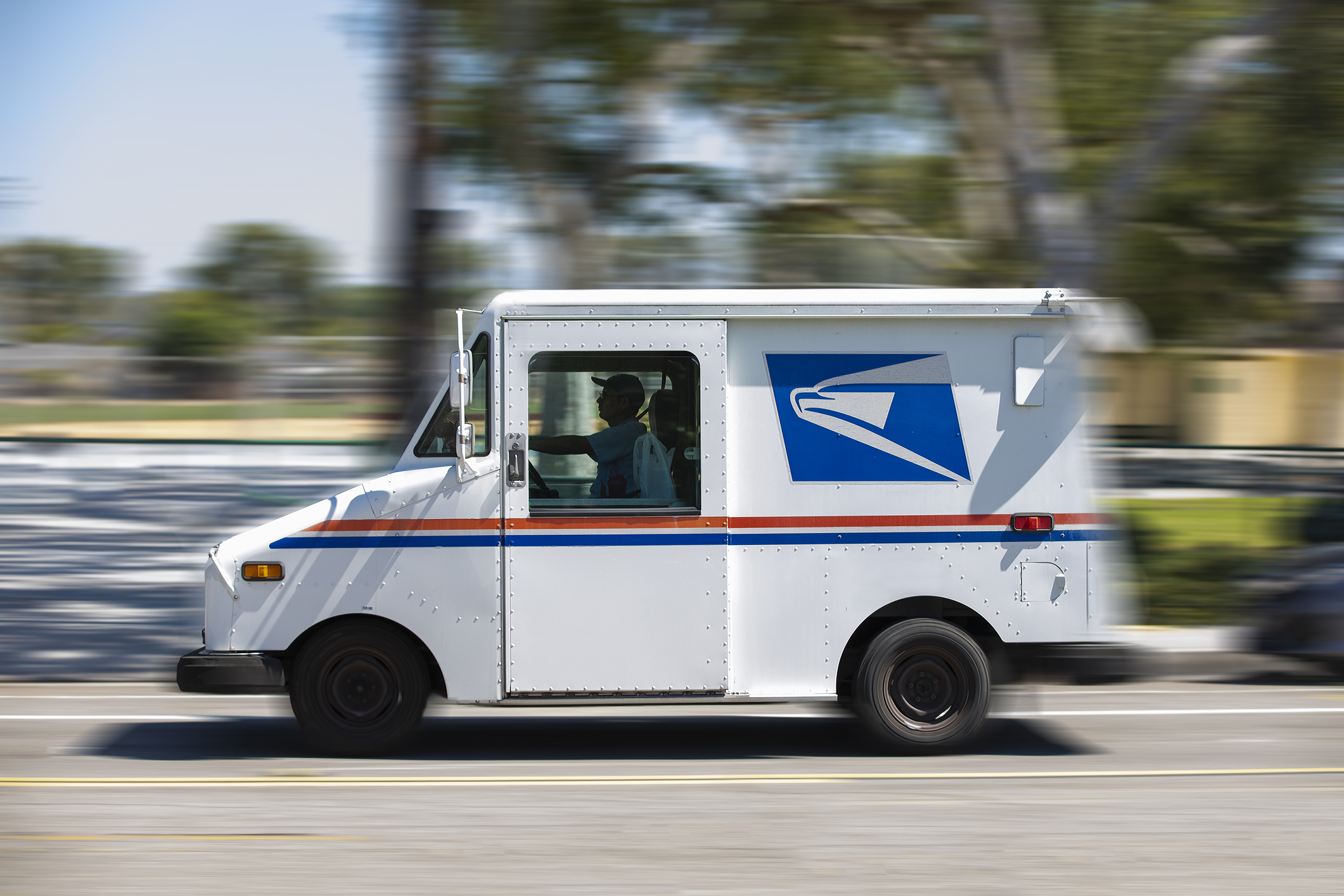The US Postal Service Does More Than Deliver Mail
With talk of cuts to the USPS swirling, here are six ways it provides vital services to the nation’s older adults.


Change is afoot at the United States Postal Service with Postmaster General Louis DeJoy announcing Monday he is stepping down.
His resignation comes as talk of privatization and job cuts under the Trump Administration are swirling for the 250-year old independent service.
In a statement DeJoy said: “we have instituted enormous beneficial change to what had been an adrift and moribund organization” but that “much work remains that is necessary to sustain our positive trajectory.” Deputy Postmaster General Doug Tulino will be in charge until the USPS Board of Governors names a permanent successor.
From just $107.88 $24.99 for Kiplinger Personal Finance
Be a smarter, better informed investor.

Sign up for Kiplinger’s Free Newsletters
Profit and prosper with the best of expert advice on investing, taxes, retirement, personal finance and more - straight to your e-mail.
Profit and prosper with the best of expert advice - straight to your e-mail.
Earlier this month DeJoy agreed to let the Elon Musk-led Department of Government Efficiency or DOGE into the USPS. In a letter to congress highlighting the work that has been done to the USPS, DeJoy said he was happy to have DOGE assist the agency in finding “further efficiencies."
Since fiscal year 2021, the USPS has reduced its workforce by 30,000 and plans to cut an additional 10,000 workers in the coming weeks under a Voluntary Early Retirement program.
At the same time, Trump has floated the idea of folding USPS into the Department of Commerce and signaled support for privatizing the postal service. Bringing it under the purview of the White House could run afoul of the Postal Reorganization Act of 1970 and would need the approval of Congress.
Six things the Postal Service does beyond mail
While the moves are aimed at improving the finances of a government agency that millions of Americans rely on, any cuts in service could impact older adults, particularly ones in rural areas.
After all, in addition to delivering the mail in snow, rain and heat, the USPS provides vital services that many older adults rely on including these six:
1. Carrier Alert Program: This free service was developed for older adults and people who have difficulty reaching vital services because of an illness or accident.
With this program, you register with your local post office and your letter carrier places a Carrier Alert symbol on your mailbox. That alerts all letter carriers to keep an eye on your mail for any signs of distress such as an accumulation of mail in your mailbox.
When you register for the program, you also register with a local social agency, such as the United Way, American Red Cross, or the local Area Agency on Aging (AAA).
If there are signs of distress, the letter carrier will alert the agency you registered with and that social service agency will try to contact you by phone and via friends and family members. If they can’t be reached, the agency will send someone to your home to check on your wellbeing.
2. Hardship delivery: If you have a hardship that makes it impossible to access your mailbox the USPS will hand deliver it to your door. The post office defines a hardship or medical problem as an illness or handicap which would present a physical challenge for an individual to retrieve mail. To get this free service fill out PS Form 1528.
3. Enable you to buy stamps and more from your letter carrier: This service is particularly helpful for people living in rural areas who can’t easily get to the post office to purchase stamps and money orders. Known as the “Post Office on Wheels” you can:
-Buy stamps.
-Use Express Mail® and Priority Mail® service.
-Mail packages (with or without insurance).
-Use Certified Mail™ or Registered Mail™ service.
-Buy money orders.
4. Fight fraud and crime: With mail theft and fraud on the rise, the USPS has been taking steps to harden physical targets by deploying high security blue collection boxes across the country and reducing change of address fraud by implementing dual authentication identity verification for online changes of addresses.
5. Neighborhood watch: While letter carriers aren’t officially part of a neighborhood watch program, postal workers are in a unique position to spot unusual activity and problems. They can report abandoned vehicles, broken windows and suspicious activity.
6. Raise money for charities: From breast cancer to Alzheimer's research, the postal service sells semipostal stamps, which are first-class stamps that cost more than regular postage, with the proceeds going to charities.
It has raised $98 million for breast cancer research, $8 million for vanishing species, $1.6 million for Alzheimer’s research and more than $2 million for PTSD, among other causes.
Related content
Profit and prosper with the best of Kiplinger's advice on investing, taxes, retirement, personal finance and much more. Delivered daily. Enter your email in the box and click Sign Me Up.

Donna Fuscaldo is the retirement writer at Kiplinger.com. A writer and editor focused on retirement savings, planning, travel and lifestyle, Donna brings over two decades of experience working with publications including AARP, The Wall Street Journal, Forbes, Investopedia and HerMoney.
-
 Small Caps Hit First New High in 4 Years: Stock Market Today
Small Caps Hit First New High in 4 Years: Stock Market TodayThe Dow Jones Industrial Average, S&P 500 and Nasdaq Composite also notched fresh record highs Thursday.
-
 Amex Platinum Just Got More Expensive: $895 Fee and $3,500 in Perks Explained
Amex Platinum Just Got More Expensive: $895 Fee and $3,500 in Perks ExplainedAmerican Express raises the Platinum Card’s annual fee to $895 and expands its perks. We break down the changes so you don’t have to.
-
 Average Spending by Age for Those 55 and Up: Are You Thrifty?
Average Spending by Age for Those 55 and Up: Are You Thrifty?Everybody has their own number for how much they’ll spend in retirement. See if your's is in line with the averages.
-
 I’m Not Worried About Saving for Retirement; I’ll Just Work Forever. What Can Go Wrong?
I’m Not Worried About Saving for Retirement; I’ll Just Work Forever. What Can Go Wrong?Here's why that approach to saving for retirement doesn't always work out.
-
 Your State Wants to Help You Save for Retirement. Here's How
Your State Wants to Help You Save for Retirement. Here's HowMaximize your side hustle by saving for retirement through a state auto-IRA. You may even get matching funds from a federal program in 2027.
-
 The Seven Best-Paying Side Gigs For Retirees
The Seven Best-Paying Side Gigs For RetireesIf you're worried you won't have enough saved for a comfortable retirement, or that life after work will be boring, these well-paid roles could be the answer.
-
 I'm 51 and My Portfolio Is Up. I'm Planning to Retire at 60 and Want to Start Moving out of Stocks. Is That Smart?
I'm 51 and My Portfolio Is Up. I'm Planning to Retire at 60 and Want to Start Moving out of Stocks. Is That Smart?We ask financial experts for advice.
-
 Gray Divorce Can Throw Your Retirement a Curveball: What to Know
Gray Divorce Can Throw Your Retirement a Curveball: What to KnowIf you're entering retirement and going through a divorce at the same time, you've got some work to do to shore up your long-term financial security.
-
 Quiz: Do You Know What Medicare Gives You for Free?
Quiz: Do You Know What Medicare Gives You for Free?This quiz tests your knowledge of the services that Medicare provides at no cost to you.
-
 Optimize, Grow, Retain: The Power of Annual Client Reviews
Optimize, Grow, Retain: The Power of Annual Client ReviewsFinancial advisers can use annual reviews to help enhance client outcomes, strengthen relationships and build their practice.